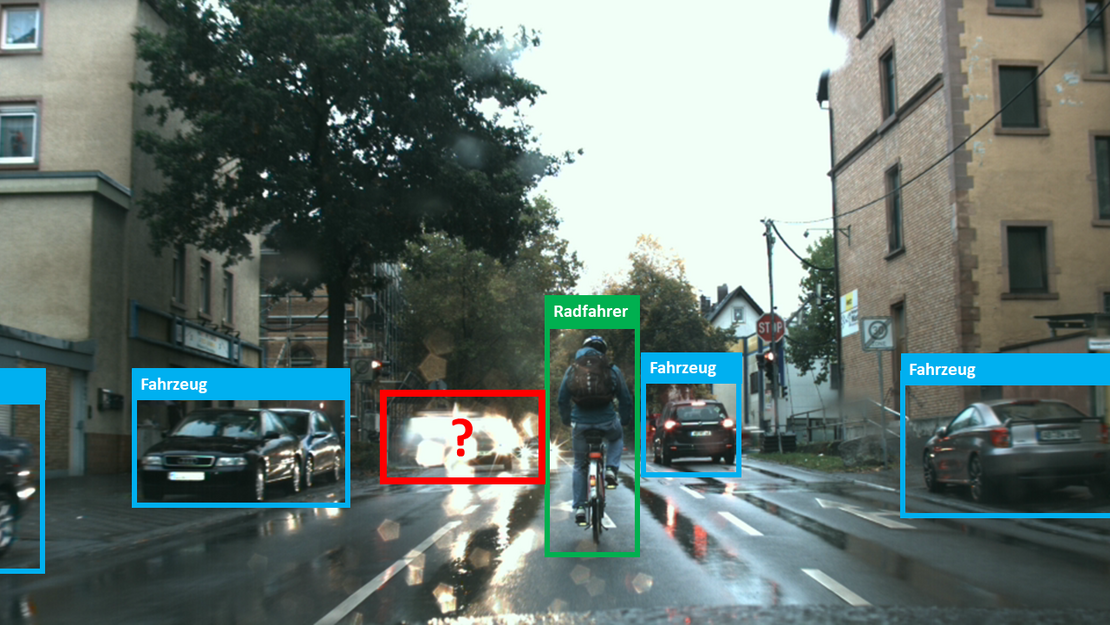This page contains automatically translated content.
Artificial intelligence on the road in traffic
 Image: Kassel University
Image: Kassel UniversityThe University of Kassel is involved in the joint project "AI Data Tooling" along with 17 other partners from science and industry. For the project, it will receive funding from the German Federal Ministry for Economic Affairs and Energy (BMWi) totaling just under €850,000 for a period of three years starting in April 2020. The joint project is part of the AI project family of the German automotive industry's "Autonomous and Connected Driving" initiative.
Artificial intelligence (AI) and machine learning in particular are the key technologies of autonomous driving. Powerful computers and algorithms independently learn recognition and solution patterns, such as automatically recognizing traffic signs, other vehicles or pedestrians with the help of camera images, radar or laser data. In order for an AI to be "learned" and its functionality to be validated, a large amount of sample data is required. Such a database can significantly shorten development cycles and testing phases. In the "AI Data Tooling" project, methods and tools are being developed for efficiently building the database for automated driving. However, not only the functions for autonomous driving will be based on AI. AI methods are already required to build up the necessary database. These new methods will be tested using the case study of detecting vulnerable road users (for example, pedestrians) as an example.
The researchers of the Department of Intelligent Embedded Systems (Prof. Dr. Bernhard Sick) are leading the subproject "Quality Requirements and Efficiency Potentials of Data Generation and Provision" in the joint project "AI Data Tooling" together with BMW and are also mainly responsible for the provision of data on so-called of Corner Cases. Corner cases are rare but often critical situations in road traffic. Furthermore, the University of Kassel is in charge of automating data refinement (annotation with additional information) using active learning methods.
*Image description:
In the image, one can see an urban traffic situation in which an autonomously driving vehicle is approaching an intersection behind a cyclist. The autonomous vehicle perceives its surroundings via the camera installed in the vehicle. The AI, which has been trained using machine learning methods, recognizes the objects in the camera image. The objects recognized by the AI are displayed in color. The weather is rainy and visibility is accordingly poor. Due to the poor environmental conditions, the oncoming vehicle is not detected. However, in order to safeguard automated driving functions, it is necessary for an AI to function reliably even in such difficult and mostly critical situations. As part of the AI Data Tooling project, tools are to be developed that can automatically identify such critical situations that are not yet well covered by AI. The situations and data selected in this way can be used for further learning of the AI as well as for validation of the AI function.
Contact:
Prof. Dr. Bernhard Sick
Department of Intelligent Embedded Systems
bsick@uni-kassel.de